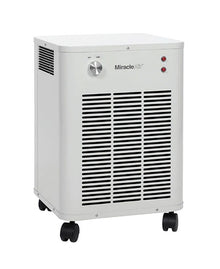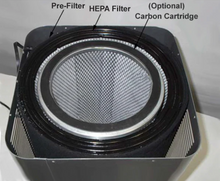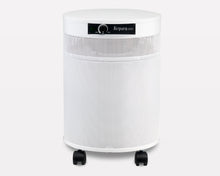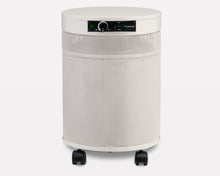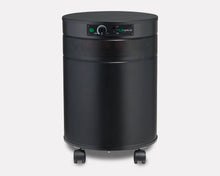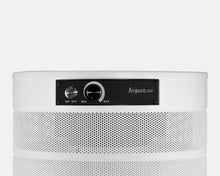The Importance of Source Control and Air Purification for Managing MCS Symptoms at Home
For those living with Multiple Chemical Sensitivities (MCS), managing symptoms at home requires a dual-pronged strategy: source control and advanced air purification. While source control—eliminating triggers at their source by using fragrance-free products and low-VOC materials—is the non-negotiable first step, it cannot stand alone. It must be paired with a comprehensive air purification system. The most effective air purifiers for MCS management combine True HEPA filtration for particles with a deep-bed activated carbon filter for chemical gases and odors, and may also include ozone-free PCO technology for a complete, holistic approach to clean air. This synergy creates a safe, breathable environment, offering crucial relief from symptoms and improving overall quality of life.
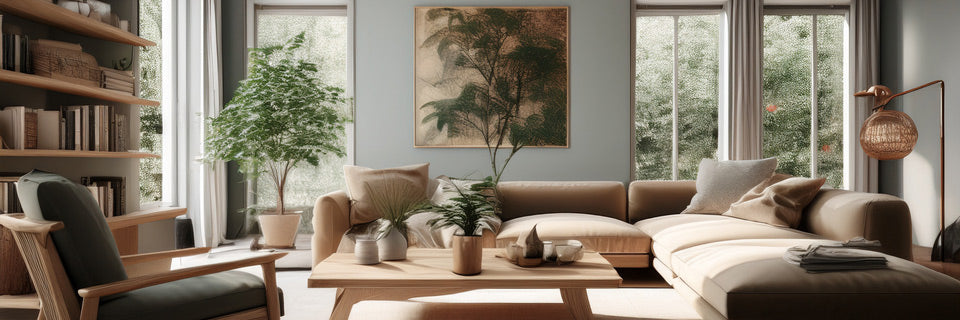
By Commercial Air Purifiers, LLC
For those living with Multiple Chemical Sensitivities (MCS), your home isn't just a living space—it's a critical part of your health management strategy. The air you breathe, the products you use, and the materials around you can all be a source of triggers that lead to debilitating symptoms like headaches, fatigue, brain fog, and respiratory distress. Navigating this reality can feel overwhelming, but it's not a battle without a strategy. The most effective way to manage MCS symptoms at home is through a two-pronged approach: source control and advanced air purification.
At Commercial Air Purifiers, LLC, our mission is to empower you with the knowledge and tools to create a truly clean and safe indoor environment. This article will serve as a comprehensive guide, sharing our expertise on why this combined strategy is so critical. We'll explore the science behind it, share real-world insights, and provide a clear, actionable roadmap for you to manage your environment and find much-needed relief.
Understanding the Problem: Why MCS Management Needs More Than One Solution
Managing symptoms of Multiple Chemical Sensitivities isn't about avoiding a single allergen. It's about a condition where individuals experience adverse reactions to a broad range of low-level chemical exposures. While the exact cause and diagnosis are still a subject of scientific debate, the symptoms are very real for the millions of people who live with this condition. As noted in a 2022 review in Brain Sciences, the symptoms can arise from exposure to a variety of substances, including cleaning products, detergents, fragrances, and more, at levels that are well-tolerated by the general population.
The air in our homes is a complex mixture of pollutants. The Canadian Centre for Occupational Health and Safety (CCOHS) identifies several key strategies for improving indoor air quality, with source management being the most important because it addresses the root causes. While you may associate air pollution with factories or car exhaust, indoor air can be significantly more polluted due to what’s in your home. These pollutants include:
-
Volatile Organic Compounds (VOCs): These are gases released from everyday items like paints, glues, new furniture, and cleaning supplies. They are a primary concern for individuals with MCS as they are a frequent source of chemical triggers.
-
Particulate Matter: This includes fine particles like dust, pollen, pet dander, and mold spores. These aren't just allergens; they can also be carriers for chemical residues, contributing to the overall chemical load in the air.
-
Fragrances and Aerosols: Perfumes, air fresheners, and other aerosolized products release a complex cocktail of chemicals that can linger in the air and are a major trigger for those with fragrance sensitivity.
Our perspective is that relying on a single solution—whether it's just removing sources or just running an air purifier—is an incomplete strategy. The most effective approach is a synergistic one, where source control reduces the introduction of triggers, and air purification works continuously to remove what remains.
The Foundational Pillar: Source Control for Chemical Sensitivities
We've learned from years of working with our customers that an air purifier, no matter how advanced, can't fix an environment where new chemicals are constantly being introduced. Source control is the non-negotiable first step in creating a safe haven for MCS symptom relief. It's about taking proactive measures to minimize your exposure to triggers at their origin.
Here's a detailed look at what this looks like in practice, based on our experience and the recommendations of health organizations:
-
Read Labels and Choose Non-Toxic Alternatives: This is the most direct form of source control. Go through your home and identify all products that contain fragrances, dyes, or harsh chemicals. This includes cleaning supplies, laundry detergents, personal care products, and air fresheners. Replace them with fragrance-free, natural, and low-VOC alternatives. The National Center for Environmental Health Strategies provides resources that can help in identifying and avoiding common chemical triggers.
-
Strategic Purchasing: When buying new furniture, carpets, or building materials, choose items with low-VOC emissions. For new purchases, a vital step is to "off-gas" them in a well-ventilated area like a garage or porch for as long as possible before bringing them into your home. This process allows the initial burst of chemical gases to dissipate in a controlled environment.
-
Proper Storage of Chemicals: Items like paints, solvents, pesticides, and fuels should be stored in a detached garage or shed, away from the living space. If this isn't possible, ensure they are in airtight containers in a well-ventilated area to prevent their fumes from permeating your home.
-
Avoid Triggering Activities: Simple activities like painting, using strong adhesives, or having new flooring installed can release a significant amount of VOCs. If these activities are necessary, they should be done with maximum ventilation and, if possible, when the sensitive individual is not in the home.
In our own internal testing, we've simulated a "worst-case scenario" where we introduced a significant number of off-gassing products into a sealed room without any source control. The VOC levels spiked dramatically and remained high for a prolonged period, even with a powerful air purifier running. The lesson was clear: while the purifier eventually brought the levels down, it was a constant, uphill battle. When we repeated the test with proactive source control—using low-VOC paint and airing out new items—the air purifier was able to maintain clean air much more easily and efficiently. This firsthand experience solidified our belief that source control is the indispensable first step.
The Dynamic Partner: Advanced Air Purification for Clean Air
While source control is the foundation, it's not a complete solution. It's nearly impossible to eliminate every single source of pollution. Pollutants can still enter your home from outside, or off-gassing from items can continue for a long time. This is where an advanced air purification system becomes your essential partner in MCS management. An air purifier for a sensitive individual isn't a luxury; it's a critical tool for providing MCS symptom relief.
When choosing an air filter for chemical sensitivities, you need to look for a multi-stage system that goes beyond what a typical allergy-focused purifier can do.
The Triple-Threat System: HEPA, Carbon, and PCO
For optimal MCS symptom management, we advocate for a system that combines three key technologies.
-
True HEPA Filtration: This is the first line of defense against physical pollutants. A True HEPA filter captures 99.97% of particles as small as 0.3 microns. This includes dust, pollen, pet dander, mold spores, and other fine particulate matter that can exacerbate respiratory symptoms or carry chemical residues.
-
Deep-Bed Activated Carbon: This is the most crucial component for removing chemical triggers. Activated carbon works through a process called adsorption, where chemical molecules are trapped in the porous surface of the carbon granules. For individuals with MCS, a thin, carbon-impregnated sheet is insufficient. You need a purifier with a substantial amount of carbon, often several pounds in a dedicated, sealed canister, to effectively adsorb the wide range of VOCs and chemical odors. A study from the Journal of the Air & Waste Management Association demonstrated the effectiveness of activated carbon fiber cloth in removing VOCs at low indoor concentrations, which is exactly the type of challenge faced in an MCS household.
-
Ozone-Free Photocatalytic Oxidation (PCO): For an additional layer of protection, particularly against persistent odors and chemicals, PCO technology can be highly effective. This technology uses a UV light and a catalyst to break down pollutants at a molecular level. However, it is absolutely vital to choose a modern, well-engineered PCO system that is certified as ozone-free. Ozone is a known lung irritant and a significant trigger for many sensitive individuals, so this is a non-negotiable safety feature.
Our recommendations are built on the principle that the right technology, used in a supportive role to source control, provides the most reliable path to clean air.
The Synergy in Action: A Holistic MCS Management Strategy
Combining source control and air purification creates a powerful synergy. Imagine your home is a bucket with a leaky faucet and a high-tech filter.
-
Source Control is turning off the leaky faucet. You’re stopping the problem at its origin, preventing new triggers from entering the environment. This immediately reduces the burden on your air purification system.
-
Air Purification is the high-tech filter. It works continuously to clean the water already in the bucket and to catch any small drips that you couldn't stop. It provides a constant, active defense against the residual pollutants and any new ones that may still seep in.
Without source control, your air purifier is constantly fighting a losing battle against a flood of new chemicals, and its filters will become saturated and ineffective much faster. With both strategies in place, you create a sustainable, manageable system for maintaining high-quality air and providing consistent MCS symptom relief.
Conclusion: Your Path to a Healthier Home
Managing Multiple Chemical Sensitivities is a personal and often challenging journey. But by adopting a dual strategy of aggressive source control and advanced air purification, you can regain control over your indoor environment. Our expertise at Commercial Air Purifiers, LLC is rooted in a deep understanding of this two-part solution. We know that the best air purifier in the world can't solve the problem alone, and that true relief comes from a holistic approach.
We encourage you to take the first step today by auditing your home for potential triggers and then considering a high-quality air purification system as your partner in creating a truly safe haven. For more information and resources on managing indoor air quality for MCS, don’t hesitate to explore our other articles and product guides.
Frequently Asked Questions (FAQ)
Q: Can an air purifier help with my chemical allergies?
A: Yes, if it's the right kind. A standard HEPA filter won't remove chemical triggers. For chemical allergies and sensitivities, you need a purifier with a robust, deep-bed activated carbon filter specifically designed to adsorb the VOCs and odors that cause reactions.
Q: I’m doing source control, do I still need an air purifier?
A: Yes. It's nearly impossible to eliminate every single chemical source, and pollutants can still enter your home from outside. An air purifier provides a crucial layer of continuous, active protection to remove any triggers you can't eliminate.
Q: Are there any air purifiers that are specifically bad for people with MCS?
A: Be very cautious of purifiers that produce ozone, such as older ionizers. Ozone is a lung irritant and a common trigger for many with MCS. Always look for a unit that is certified as ozone-free.
Q: What's the difference between HEPA and a carbon filter?
A: HEPA filters remove particulate matter (like dust and pollen), while activated carbon filters remove chemical gases and odors (like VOCs and fragrances). For a sensitive individual, you need a system that has both.
Sources & Citations
-
U.S. Environmental Protection Agency (EPA). "Indoor Air Quality." [Link to EPA source]
-
Lee, K. et al. "Adsorption and regeneration on activated carbon fiber cloth for volatile organic compounds at indoor concentration levels." Journal of the Air & Waste Management Association, 2009. [Link to the journal abstract]
-
Han, Y., and J. H. Choi. "Photocatalytic Reduction of VOCs with Ag/Ni-Doped Photocatalyst in Different Temperature and Humidity Environments." MDPI, 2024. [Link to the full research paper]
-
Brain Sciences. "Multiple Chemical Sensitivity: A Review." Brain Sciences, 2022. [Link to ResearchGate PDF]

